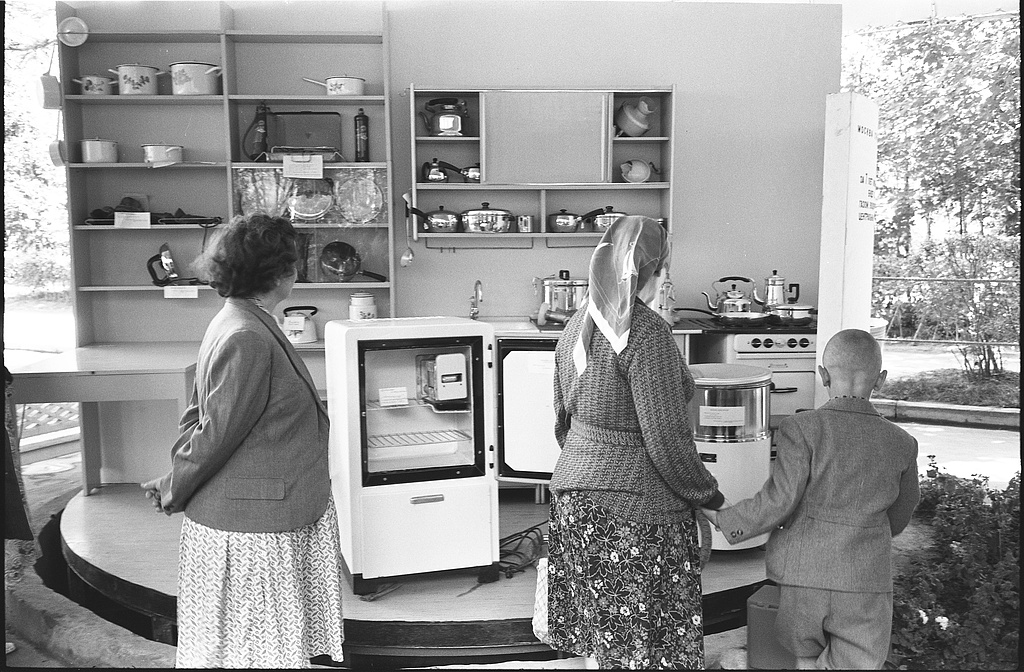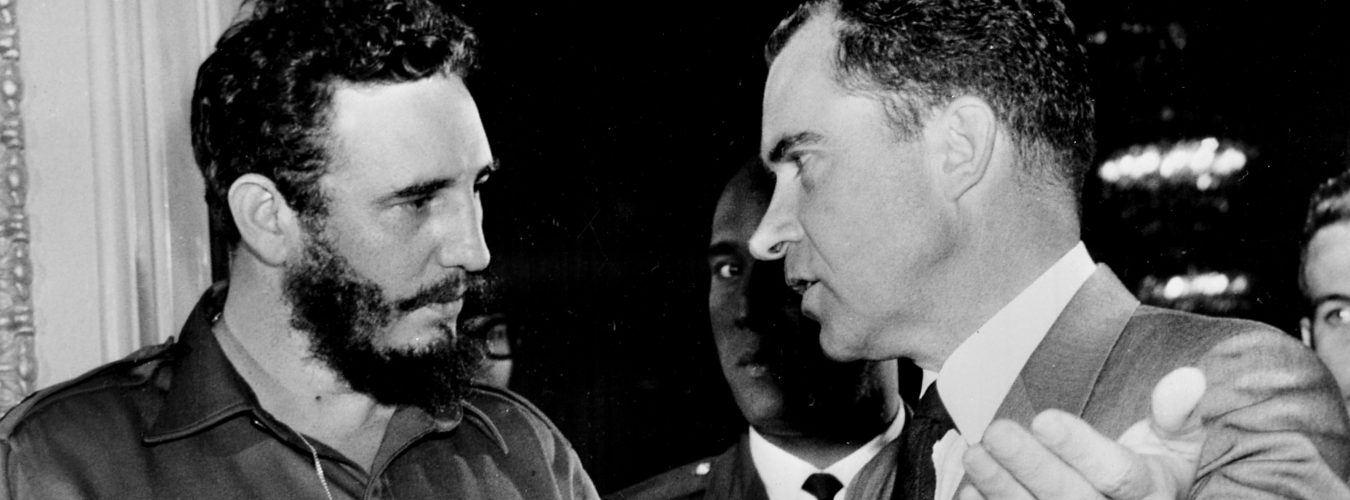
In the summer of 1959, the United States and the Soviet Union had mirror exhibitions in each other’s countries that were meant to showcase their technological prowess. The infamous “kitchen debate” took place in the Soviet Union during the American showcase. In November of that year, however, the Soviet Union also had a showcase in Mexico’s National Auditorium. Taking place between November 21, 1959, and December 15, 1959, the Soviet Union pretty closely replicated the exhibition it had earlier that year in New York.
The exhibition was meant to showcase the successes that the USSR had in the fields of space, energy, engineering, and culture, and as a contrast Mexico’s northern neighbor. According to reports sent from Soviet diplomats in Mexico, most of the people who had the most interest in the exhibits tended to be specialists from the Polytechnic Institute, some mining companies, and people in the oil industry”The Mexicans were simply amazing in the face of those greatest creations of the mankind.”
The Soviets were also showcasing the “peaceful application” of atomic energy, including miniature replicas of nuclear power plants, accelerators, and ships. Farming was also a particularly important showcase for the Mexicans, considering how large of an agrarian society many of the places outside of the cities were.
After the exhibition, the Soviets considered the event a huge success. By the end of the event, the Soviets had distributed about one million copies of various propaganda and literature. The Soviets also claimed that demand for their literature exceeded demand by two or three times. By the end of the exhibit, they claimed that many local papers were now calling the USSR the favorite country of Mexicans. Internationally, the Soviet exhibition also received much praise from many other Latin American countries, including Cuba, Venezuela, Columbia, and Brazil. Even though the exhibit was limited to Mexico, by the end of 1959 the USSR had established popularity in Latin America that would come to fruition within a few years, especially in Cuba.
The United States recognized the stakes of an exhibit taking place with their neighbor, but also saw it as an opportunity to further their own gains. While the exhibit was taking place, the US had an agent of the Dirección Federal de Seguridad (DFS), Mexico’s intelligence agency and secret police, turn into a double agent for the CIA and help steal designs to a satellite that Soviets had developed. The spy, Eduardo Diaz Silveti, was successful in his work and would be labeled a traitor a few years later, eventually escaping to the US. Publicly, however, the US did not seem to be fazed by the visit, with the New York Times publishing articles about the visit deep in their pages. Conversely, in February of the following year, the Soviet exhibit in Cuba made front-page news.
The Soviet Exhibit in Mexico was overall an immense success to further the cause of the Soviet Union. A year later the Soviet Academy of Science Institute of Latin America would publish a document that detailed the economic development of Mexico and ways that the USSR could support the Mexican people and its government to keep it from becoming more reliant on the US, to the point of dependency. Primarily, the USSR would try to continue to foster the relationship with Mexico and its people that it had shown during the exhibitions the year before.
Citations
JoriPress. “Lunik: Inside the CIA’s Audacious Plot to Steal a Soviet Satellite.” JoriPress. January 28, 2021. Accessed February 14, 2021. https://joripress.com/lunik-inside-the-cias-audacious-plot-to-steal-a-soviet-satellite.
New York Times. “MIKOYAN TO OPEN A FAIR IN MEXICO.” New York Times, November 14, 1959.
Shelnov, A.”Report on the Work of the Soviet Exhibition in Mexico Year 1959,” 1959, History and Public Policy Program Digital Archive, Russian State Archive of the Economy, f. 635, op. 1, d. 392, ll. 1-12. Obtained and translated for CWIHP by Vanni Pettina. https://digitalarchive.wilsoncenter.org/document/122362
Soviet Academy of Science Institute of Latin America. “[Excerpt] Soviet Report, ‘Mexico: Economic Situation and Prospects of Development of Economic Ties with the Soviet Union’,” 1960, History and Public Policy Program Digital Archive, Russian State Archive of the Economy, f.645, op. 1, d. 31. l. 481-483. Obtained for CWIHP by Vanni Pettina and translated by Gary Goldberg. https://digitalarchive.wilsoncenter.org/document/122364
Sorene, Paul. “Soviet Citizens See The Future: Photos From The 1959 Kitchen Debate.” Flashbak. June 14, 2017. Accessed February 14, 2021. https://flashbak.com/soviet-citizens-see-the-future-photos-from-the-1959-kitchen-debate-381510/
